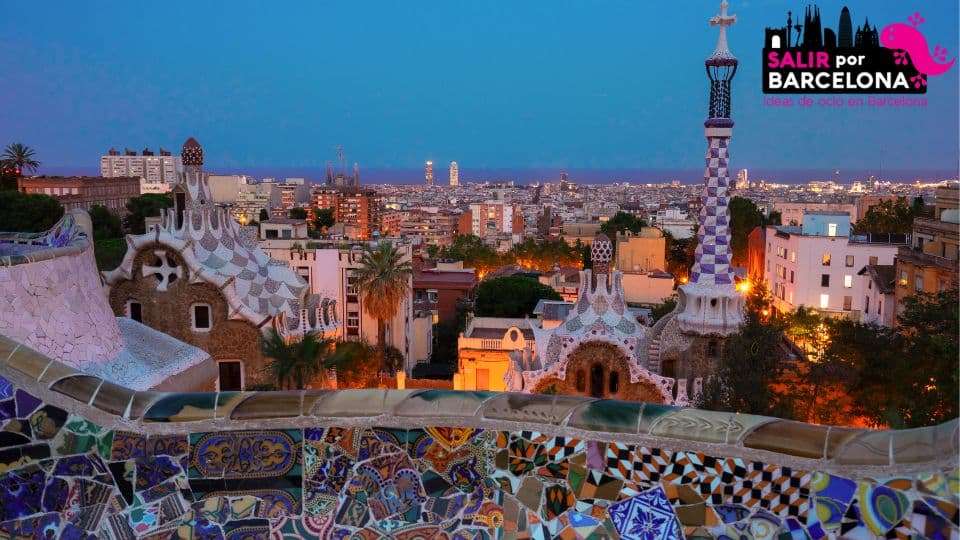The Barcelona City Council has put on the table a proposal that has generated debate: the increase in the price of tourist admission to Park Güell, which would go from the current 10 euros to 18 euros. This tariff adjustment is part of the plan to increase tourist taxation in the city, in a measure that seeks not only to bring the price in line with other European monuments, but also to ensure the preservation of heritage and promote a more sustainable tourism.
 Park Güell: an icon of Barcelona and Europe
Park Güell: an icon of Barcelona and Europe
With more than 4.5 million visitors a year, Park Güell is the second most visited monument in Barcelona, second only to the Sagrada Familia. At the European level, it is among the ten most visited monuments, consolidating itself as an obligatory stop for tourists from all over the world. Despite its popularity, the price of admission has historically been much lower compared to other monuments of similar characteristics. While the average entrance fee to the twenty most visited monuments in Europe is around 20 euros, Park Güell has maintained an affordable cost for tourists.
Aligning rates with the rest of Europe
The increase proposed by the Barcelona City Council aims to bring the price of admission to Park Güell in line with other emblematic monuments both in the city and in the rest of Europe. By setting the price at 18 euros, it highlights the architectural and cultural value of Park Güell, Antoni Gaudí’s masterpiece, and brings it in line with other monumental spaces in the city that already have similar rates.
Park Güell: walk through the hallucinating garden from Gaudí’s imagination.
This adjustment not only represents an attempt to regulate the price according to its importance, but will also allow the income generated by the entrance fees to be reinvested in the preservation of the monument and in improvements for the nearby neighborhoods. The idea is that, in addition to enjoying the park, tourists will contribute to the maintenance of the heritage and the development of adjacent areas.
Preservation and sustainable tourism
Access to Park Güell has been regulated since 2013 by Barcelona de Serveis Municipals (BSM), which manages the flow of tourists in order to ensure the proper maintenance of the space and coexistence with neighbors. The price review is part of a broader strategy to control the tourist influx and minimize the environmental and social impact that the high concentration of visitors to the park can have.
Parc Güell declared the second most beautiful park in Europe
The price increase not only seeks a better balance in the relationship between visitors and residents, but will also help generate a more orderly and higher quality tourism. Through this adjustment, it is expected that the number of visitors will be more manageable, which will allow for better conservation of the park and a more pleasant experience for everyone.
Benefits for Barcelona residents
Despite the proposed increase, access for Barcelona residents will remain free of charge through initiatives such as “Bon dia Barcelona” and “Bon vespre Barcelona”. These programs allow residents to enjoy the park free of charge during specific time slots, thus maintaining the right of Barcelonans to access their local heritage. In addition, residents who sign up for the “Gaudir Més” program or have a neighborhood card will continue to benefit from free access.
A broader fiscal plan
The proposal to increase the entrance fee to Park Güell is not an isolated event, but is part of a broader project of tax ordinances for 2025. This plan includes an increase in tourist taxation and revenue collection for the city, without affecting the middle class. The tourist surcharge, which was already increased this October to the legal maximum of 4 euros per night, is one of the measures that complement this project.
The history of Park Güell in Barcelona and why to visit it
In addition, the City Council has proposed an increase in the Real Estate Tax (IBI) for properties with higher value in the leisure and hospitality sectors, as well as for properties with special characteristics, such as the Port of Barcelona or cruise terminals. The aim is to generate more revenue from the tourist activities that have the greatest impact on the city, without these changes significantly affecting citizens.
New measures for tourist coaches
Another novelty within this tax project is the introduction of a daily tax of 35 euros for tourist coaches using the Barcelona Bus Zone. Likewise, an additional cost of 3 euros has been proposed for each stop in areas of high tourist affluence, with obligatory prior reservation. These measures seek to regulate the traffic of large tourist groups, facilitating better management of public spaces and minimizing congestion in the busiest areas.
Impact on tourism
The increase in the price of admission to Park Güell, along with the new fees and surcharges, is aimed primarily at international tourism, which accounts for the bulk of visits to the city. By better regulating access and adjusting prices, the City Council hopes to encourage tourism that is more conscious and respectful of local heritage. The revision of rates is not only intended to generate additional income, but also to balance the tourist load in the city. These measures are intended to ensure that tourism, one of Barcelona’s main sources of income, continues to contribute to the city’s wellbeing, but in a sustainable manner and without compromising the quality of life of residents.
A look into the future
This fare adjustment at Park Güell is just one part of a broader effort to redefine the role of tourism in Barcelona. With a focus on preserving heritage and improving the quality of life for local residents, the City Council seeks to balance tourism growth with the needs of the city. Park Güell is one of Barcelona’s most valuable treasures and, through this measure, its protection is ensured for future generations. A higher price for tourists not only helps to keep the park in optimal conditions, but also contributes to the sustainable development of the city.


 Park Güell: an icon of Barcelona and Europe
Park Güell: an icon of Barcelona and Europe
